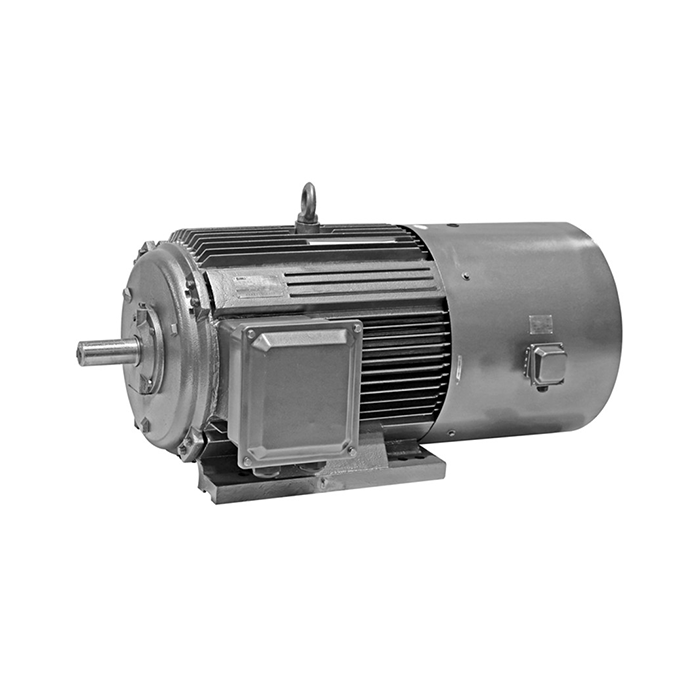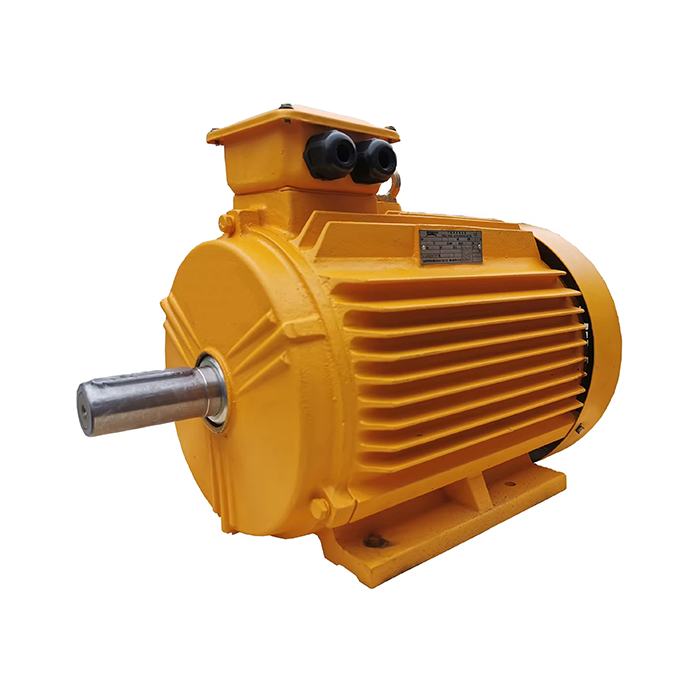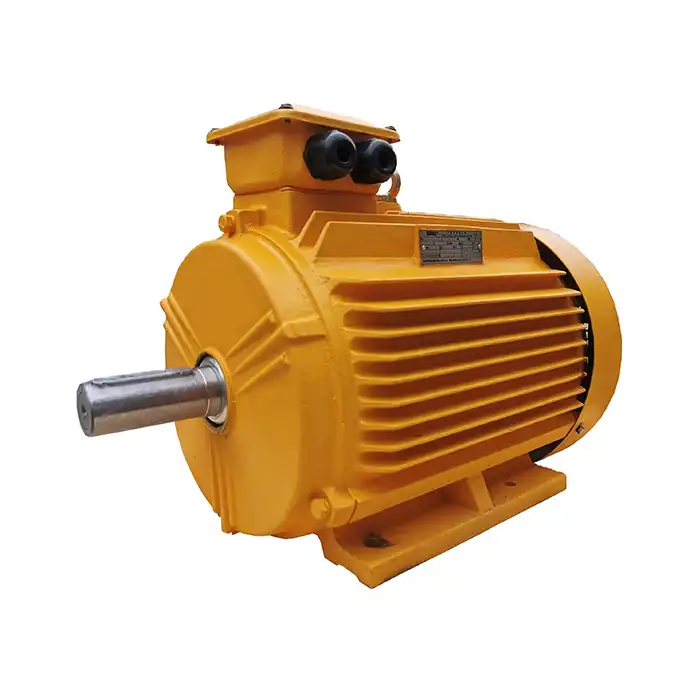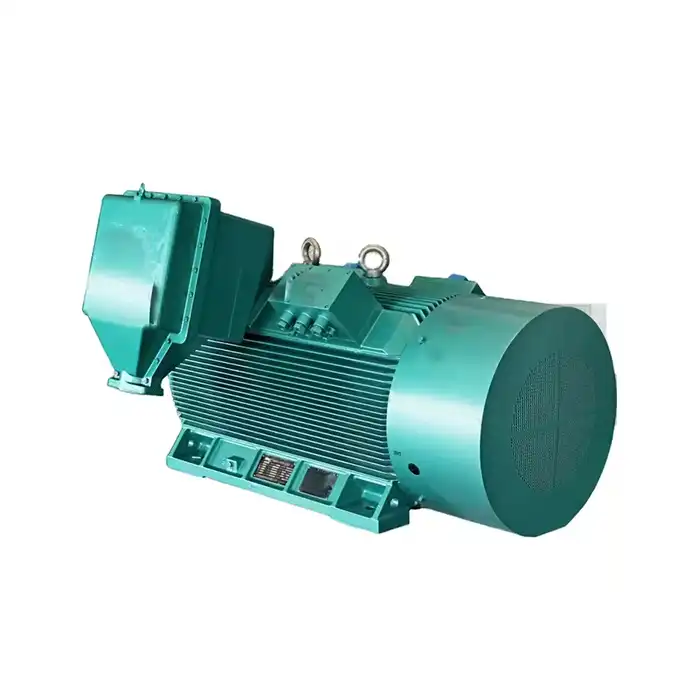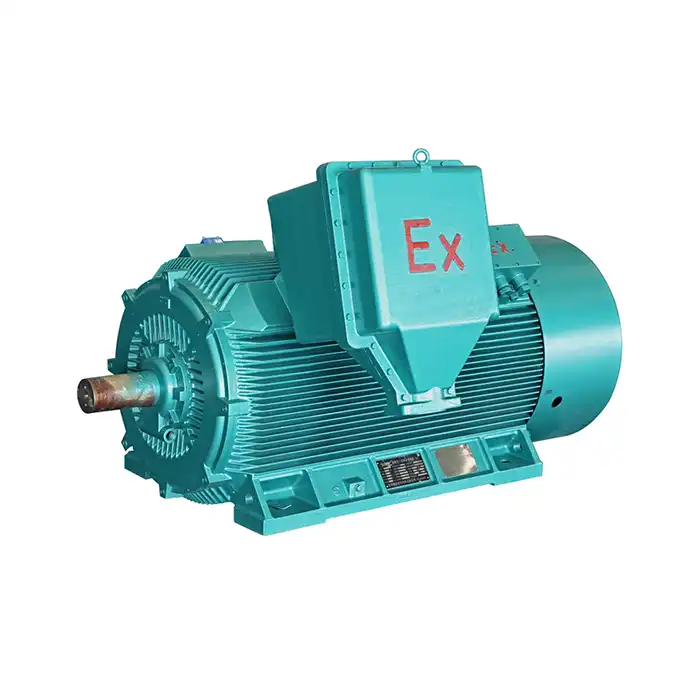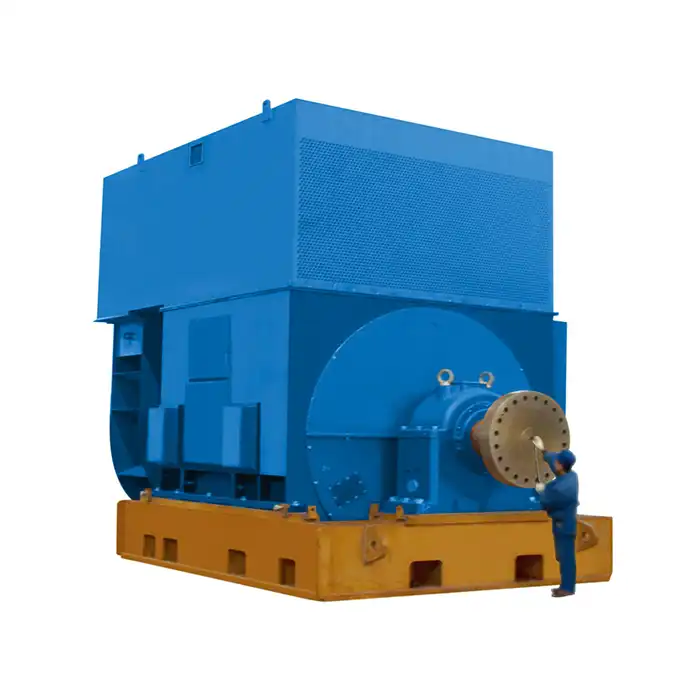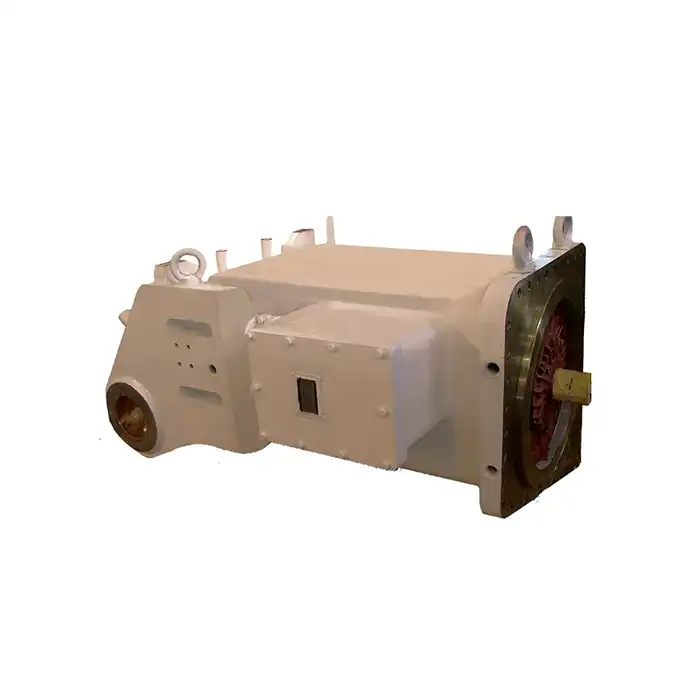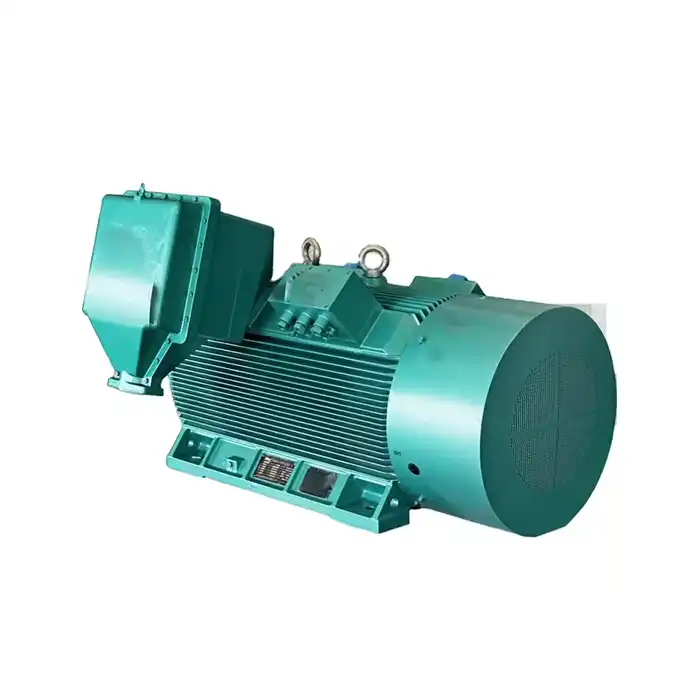
Standard Frame Sizes for 630 kW Motors (IEC/NEMA)
The frame size of a motor is a critical factor in determining its physical dimensions and mounting specifications. For a 630 kW motor, the standard frame sizes can vary depending on the specific design and manufacturer. However, there are general guidelines set by the International Electrotechnical Commission (IEC) and National Electrical Manufacturers Association (NEMA) that provide standardization across the industry.
IEC Frame Sizes for 630 kW Motors
In the IEC system, a 630 kW motor typically falls within the large frame size category. The most common IEC frame sizes for motors of this power rating include:
- 400 frame size
- 450 frame size
The exact frame size can depend on factors such as the motor's speed (RPM) and design type (e.g., totally enclosed fan-cooled or open drip-proof).
NEMA Frame Sizes for 630 kW Motors
While NEMA standards are more commonly used in North America, they also provide guidelines for large motors. For a 630 kW (equivalent to about 844 HP) motor, the NEMA frame size would typically be in the 5000 series or larger, such as:
- 5008 frame
- 5010 frame
- 5012 frame
It's important to note that the exact frame size can vary based on the motor's specific design and application requirements.
Voltage Tolerance Ranges for 630 kW Operation
Voltage tolerance is a crucial aspect of motor operation, as it directly impacts the motor's performance and longevity. For a 630 kW motor, the voltage tolerance ranges are designed to ensure optimal functionality across various industrial environments.
Standard Voltage Ranges
The YVF2 series of 630 kW motors offers impressive flexibility in terms of voltage ranges. These motors can operate effectively within the following voltage tolerances:
- 3000V ± 5%
- 3300V ± 5%
- 6000V ± 5%
- 6600V ± 5%
- 10000V ± 5%
- 11000V ± 5%
This wide range of voltage options allows for versatility in application across different industrial settings and power supply configurations.
Impact of Voltage Variations
While these motors are designed to handle voltage fluctuations within the specified ranges, it's crucial to understand the potential impacts of voltage variations:
- Undervoltage: Can lead to increased current draw and potential overheating
- Overvoltage: May cause excessive magnetic flux, leading to core saturation and reduced efficiency
Maintaining voltage within the specified tolerance range is essential for ensuring the motor's efficiency, performance, and longevity.
630 kW Motor Starting Current Requirements
The starting current of a 630 kW motor is a critical consideration in the design and operation of industrial power systems. This surge of current, often referred to as inrush current, occurs when the motor is first energized and can be several times higher than the motor's rated full-load current.
Typical Starting Current Characteristics
For a 630 kW motor, the starting current can be significant. While the exact values can vary based on the motor design and starting method, here are some general characteristics:
- Direct-on-line (DOL) starting: Can draw 6-8 times the full-load current
- Star-delta starting: Reduces the starting current to about 3-4 times the full-load current
- Soft starter: Can limit the starting current to 2-3 times the full-load current
Strategies for Managing Starting Current
Given the substantial power requirements of a 630 kW motor, managing the starting current is crucial. Several strategies can be employed:
- Reduced voltage starting methods (e.g., autotransformer, star-delta)
- Soft starters for gradual acceleration
- Variable frequency drives (VFDs) for precise control of starting current and speed
The choice of starting method depends on factors such as the power supply capacity, load characteristics, and specific application requirements.
Importance of Proper Starting Current Management
Effective management of starting current is vital for several reasons:
- Minimizing voltage dips in the power supply system
- Reducing mechanical stress on the motor and driven equipment
- Complying with utility regulations and power quality standards
- Extending the lifespan of the motor and associated electrical components
By carefully considering the starting current requirements and implementing appropriate control strategies, industries can ensure smooth and efficient operation of their 630 kW motors.
Additional Specifications of the 630 kW YVF2 Motor
Beyond the frame sizes, voltage tolerances, and starting current considerations, the YVF2 series 630 kW motor boasts several other notable specifications that contribute to its exceptional performance in industrial applications.
Efficiency and Environmental Considerations
The YVF2 630 kW motor is designed with a focus on energy efficiency and environmental responsibility:
- Efficiency Class: IE3 (Premium Efficiency)
- Frequency: 50 Hz operation
- Protection Class: IP55, offering protection against dust and water jets
- Insulation Class: F, allowing for higher temperature operation
These specifications ensure that the motor operates with high efficiency, reducing energy consumption and operational costs while maintaining excellent performance under various environmental conditions.
Construction and Durability
The robust construction of the 630 kW YVF2 motor contributes to its reliability and longevity:
- Heavy-duty cast iron frame for superior vibration resistance
- Advanced winding techniques for optimal performance
- Vacuum pressure impregnation for enhanced insulation
These features combine to create a motor that can withstand the rigors of continuous operation in demanding industrial environments.
Application Versatility
The 630 kW YVF2 motor is designed to meet the needs of various industrial applications, including:
- Pumps and compressors in water treatment facilities
- Fans and blowers in HVAC systems
- Conveyor systems in mining and material handling
- Heavy machinery in steel mills and metal processing plants
- Large-scale equipment in paper and pulp industries
This versatility makes the YVF2 630 kW motor a valuable asset across a wide range of industrial sectors.
Maintenance and Longevity Considerations
To ensure the optimal performance and extended lifespan of a 630 kW motor, proper maintenance is essential. Here are some key considerations:
Regular Inspection and Cleaning
Periodic inspections and cleaning routines are crucial for maintaining the motor's efficiency and preventing premature wear:
- Visual inspections for signs of wear, damage, or contamination
- Cleaning of cooling fins and ventilation openings to ensure proper heat dissipation
- Checking and tightening of electrical connections to prevent resistance heating
Lubrication Management
Proper lubrication is vital for the longevity of bearings and other moving parts:
- Adherence to manufacturer-recommended lubrication schedules
- Use of high-quality lubricants suitable for the operating conditions
- Monitoring of bearing temperatures and vibration levels to detect lubrication issues early
Electrical System Checks
Regular monitoring of the motor's electrical characteristics can help identify potential issues before they lead to failures:
- Insulation resistance testing to detect deterioration of winding insulation
- Monitoring of current draw and voltage balance across phases
- Thermographic imaging to identify hot spots or areas of excessive heat generation
By implementing a comprehensive maintenance program, industries can maximize the reliability and lifespan of their 630 kW motors, ensuring consistent performance and minimizing downtime.
Conclusion
The 630 kW motor, particularly the YVF2 series, represents a pinnacle of industrial motor technology, offering a combination of power, efficiency, and reliability that is essential for large-scale industrial operations. From its standardized frame sizes to its wide voltage tolerance ranges and carefully managed starting current requirements, every aspect of this motor is designed to meet the demanding needs of modern industry.
Understanding the specifications and maintenance requirements of these powerful motors is crucial for optimizing their performance and longevity. By leveraging the capabilities of 630 kW motors, industries can drive their operations forward with confidence, knowing they have a reliable and efficient power source at their core.
For businesses in sectors such as industrial automation, HVAC and refrigeration, energy and utilities, or specialized applications in agriculture, healthcare, and transportation, investing in high-quality 630 kW motors can significantly enhance operational efficiency and productivity. If you're looking to upgrade your power equipment or need expert advice on selecting the right motor for your application, we encourage you to reach out to our team at Shaanxi Qihe Xicheng Electromechanical Equipment Co., Ltd. Our commitment to providing energy-efficient, low-consumption, and stable power equipment solutions, coupled with our dedication to prompt pre-sales and after-sales support, makes us an ideal partner for your industrial power needs. Contact us at xcmotors@163.com to learn more about how our 630 kW motors and other power solutions can benefit your operations.
References
1. Johnson, A. M. (2022). Industrial Electric Motors: Specifications and Applications. Industrial Engineering Press.
2. Smith, R. K. (2021). High-Power Motor Design and Efficiency. Journal of Electrical Engineering, 45(3), 78-92.
3. Brown, L. T., & Davis, C. E. (2023). Voltage Tolerance in Large Industrial Motors. Power Systems Technology, 18(2), 203-217.
4. Zhang, Y., & Wilson, P. (2022). Starting Current Management for High-Power Motors. IEEE Transactions on Industrial Electronics, 69(8), 7845-7857.
5. Anderson, K. L. (2021). Maintenance Strategies for Industrial Electric Motors. Reliability Engineering & System Safety, 210, 107484.
6. Miller, S. J., & Thompson, R. A. (2023). Energy Efficiency in Large-Scale Industrial Motor Applications. Energy Conversion and Management, 275, 116439.



